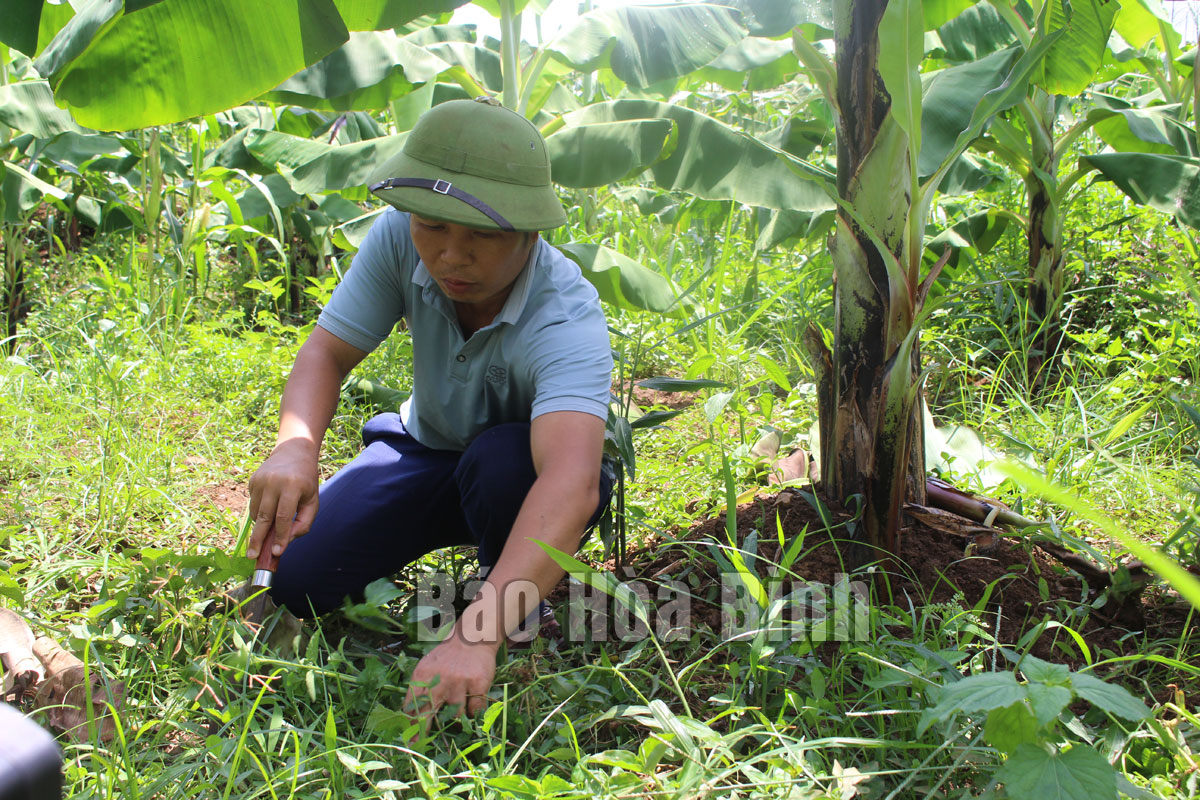
(HBO) - Towards a green and environmentally-friendly agriculture, many agricultural cooperatives in Hoa Binh province have used biological products in pest prevention and control and composted organic fertilisers to manure plants. Green agricultural models have helped reduce production costs, create clean and safe food for consumers, and at the same time create a healthy living environment.

A member household of
Dong Phong Agricultural Service Cooperative in Hop Phong commune of Cao Phong
district grows bananas combined with medicinal plants under the model of "Green
production - healthy living”.
Clean agricultural products which meet food hygiene and
safety standards are an indispensable need in the current period. With its role
and function of protecting, representing and supporting collective economic
organisations, over the past time, the provincial Cooperative Alliance has
organised many activities to support cooperatives with opportunities to access
to clean agricultural production; and create chances for cooperatives and
businesses to boost linkages in production and consumption, and form supply chains
under contracts.
In 2021, the alliance organised 11 workshops and 30 events
connecting businesses and cooperatives. Since the beginning of this year, nine
seminars have been held in nine districts for businesses and suppliers to meet
and discuss with cooperatives and local authorities.
Tran An Dinh, chairman of the alliance, emphasised that to
protect the environment and limit the use of pesticides and fertilisers,
recently, the alliance called for OXFAM’s support for the implementation of an
initiative to raise public awareness about the Law on Environmental Protection
towards changing the behaviour of using fertilisers and pesticides in
production for its members in Cao Phong district. Implementing the initiative,
the alliance has organised training for its members and farmer households
associated with cooperatives in the district.
It has also held workshops to share the results of the
implementation of the environmentally-friendly agricultural production models
with local people. In the coming time, the alliance will organise mobile groups
to disseminate information about the Law on Environmental Protection and
environmentally-friendly production.
According to data from the Hoa Binh Provincial Party Committee, the industrial production index for the first six months of 2025 is estimated to have increased by 20% compared to the same period last year. This marks the highest year-on-year growth rate for this period since 2020.
In the first six months of 2025, Hoa Binh province’s export turnover was estimated at 1.145 billion USD, marking an 18.11% increase compared to the same period in 2024. Import turnover was estimated at $ 804 million, a 17.15% increase, which helped the province maintain a positive trade balance.
The lives of the ethnic minority farmers in Tan Lac district have gradually improved thanks to the new directions in agricultural production. This is a testament to the collective strength fostered through the professional associations and groups implemented by various levels of the district’s Farmers’ Union.
With the motto the "product quality comes first,” after nearly one year of establishment and operation, Muong village’s Clean Food Agricultural and Commercial Cooperative, located in Cau Hamlet, Hung Son Commune (Kim Boi district), has launched reputable, high-quality agricultural products to the market that are well-received by consumers. The products such as Muong village’s pork sausage, salt-cured chicken, and salt-cured pork hocks have gradually carved out a place in the market and they are on the path to obtaining the OCOP certification.
In the past, the phrase "bumper harvest, rock-bottom prices" was a familiar refrain for Vietnamese farmers engaged in fragmented, small-scale agriculture. But today, a new spirit is emerging across rural areas of Hoa Binh province - one of collaboration, organisation, and collective economic models that provide a stable foundation for production.
Maintaining growing area codes and packing facility codes in accordance with regulations is a mandatory requirement for agricultural products to be eligible for export. Recently, the Department of Agriculture and Environment of Hoa Binh province has intensified technical supervision of designated farming areas and packing facilities to safeguard the "green passport" that enables its products to access international markets.



